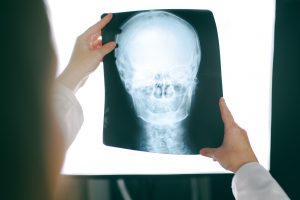Airbags and seatbelts are fitted to keep you safe in the event of an accident. Sadly, the last thing that these things will protect during an auto accident is your head.
Any sudden forward motion during a crash may bounce your head off to the steering wheel or windshield and cause significant harm. Debris or other passengers moving through the car could also hit you.
When this happens, your likelihood of sustaining head injuries is so high. This blog will discuss the various types of head injuries from a car accident that you could possibly suffer. Read on to learn more.
How Common Are Head Injuries from Car Accidents?
Head injuries, more technically known as traumatic brain injuries (TBI), are the most common auto accident injuries.
To take you back a little, TBI is one of the most common traumatic head injuries that a person can experience. According to the Centers for Disease Control, approximately 1.7 million TBIs occur annually.
And how do people sustain these injuries? The answer is car accidents.
After falls which account for over 35 percent, car accidents are the second leading cause of TBIs, accounting for 17.3 percent yearly.
In fact, one person in the U.S sustains TBI every 23 seconds. About 50,000 of these people die every year after a TBI.
Unfortunately, children and young adults make up the most significant number of TBI-related deaths from car accidents. That means a lot of attention should be focused on auto accidents.
Delayed Pain – How Long Do Head Injuries Take to Appear?
After a car accident, some head injury symptoms may appear immediately. However, other symptoms may take days or even weeks to appear. Early signs show within 24 hours of the accident, while delayed symptoms take up to three weeks.
An important thing to remember is that any blow to the head can be potentially severe and life-threatening, even if there is no apparent bruise. If you have been involved in a car accident, you should go to the A&E even if you don’t feel hurt.

Also, look out for symptoms of head injuries in the subsequent weeks. They include:
- Headache
- Nausea
- Dizziness
- Loss of memory
- Difficulty concentrating
- Restlessness
- Irritability
If you experience any of these symptoms after a car accident, you should make an appointment with your primary care physician.
Usually, mild head injuries like concussions subside within a few weeks to a month after your car accident.
If your symptoms take longer than this, you might be suffering from more severe injuries. And in that case, you might want to consult with an experienced attorney to discuss how you can seek compensation for your personal injury.
What Are Some of the Most Common Head Injuries?
The type of head injury you experience determines the symptoms and the overall effect on your life. Here are the five most common types of head injuries from a car accident.
1. Concussion
Concussions, also known as mild TBIs, are the most common head injury in car accidents. Every year, 812,000 children aged below 17 go to the ER for concussion or TBI. Concussions can range from mild to severe.
- Grade 1: Victim remains conscious, or amnesia is present for 30 minutes or less
- Grade 2: The victim is unconscious for less than five minutes, or less than 24 hours of amnesia
- Grade 3: Unconscious for more than 5 minutes or amnesia lasting more than 24 hours
While concussions are mostly nonfatal, they can sometimes be severe and cause long-term damage. Its symptoms include headache, dizziness, fatigue, and brief change in mental status.
2. Facial Injuries
The face has several distended bones, including the brow, cheeks, jaw, and nose. All these are at risk of severe injury when a car accident occurs.

Nosebleeds, pain, bruising, and swelling are some expected symptoms based on how severe the facial fracture is. Sometimes, a bad auto crash could lead to permanent facial deformity.
3. Skull Fractures
Trauma can be so harsh on the head that it breaks the skull. This is what we call open head injury. There are pretty many skull fractures that occur in car accidents. Below are a few:
- Linear fracture: Skull fractured in a line, but doesn’t displace the bone
- Stellate fracture: Several linear fractures spreading out from the impact point
- Depressed fracture: Part of the skull is broken and pushed into the cranial cavity. This will require surgery
- Basilar fracture: Injury at the base of the skull.
4. Traumatic Brain Injury
Head injuries can be misleading due to the lack of distinctive visible symptoms. Yet, it is very possible for the brain’s soft tissue to suffer considerable damage even without showing any bruises on the skin.
Regrettably, such internal injuries may worsen in the long run if not addressed immediately. So, seeing a physician and reporting any symptoms after a crash is crucial.

Some of the signs to look out for include:
- Headaches
- Memory loss
- Dizziness
- Nausea
- Mood changes
- Loss of consciousness
- Severe disorientation
As mentioned, TBI has no visible signs. So, whether you have sustained any visible injuries or not, it’s important to visit the hospital to rule out any serious damage to your brain or other possible head injuries from car accident.
5. Brain Swelling
Sometimes the impact on the head can cause trauma to the brain. When this happens, the body naturally induces a swelling response.
Brain swelling, also called cerebral edema, is a severe condition that may require emergency surgery. If the swelling continues compressing the brain against the skull, the victim may suffer grave side effects or even abrupt death. Unfortunately, this type of injury is hard to detect.
A noticeable impact point could be lacking, but the trauma is sufficient to activate swelling. Symptoms are the same as those of TBI mentioned above, but the victim may also develop fever and fatigue.
Head Injury Symptoms in Children
Did you know that head injury is the leading cause of disability and death in children?
Children aged 0-4 and adolescents aged 15-19 years are at higher risk of sustaining TBI than their older counterparts. Every year, there is an average of 35,000 children with head injuries from car accidents, according to the CDC.

Head injury symptoms differ from child to child. This becomes problematic for younger children as they cannot express how they are feeling. Children head injuries from car accident present such symptoms as:
- Drowsiness
- Inability to concentrate
- Change in eating or nursing habits
- Change in sleep patterns
- Seizures
If your child was involved in a car accident, it’s essential to take them to the ER immediately for testing and timely diagnosis.
You may then pursue compensation for the injuries and damages from your insurance provider after receiving treatment. An experienced personal injury attorney can help you with the claims process.
Final Thoughts
Head injuries can result in high medical bills and affect your return to work. In extreme cases, permanent injuries will have you restructuring your life to adjust to your new normal.
Focusing on healing and recovery can be next to impossible when you’re burdened with the increasing financial stress.
At Legal Giant, we fight for the rights of injured victims with court representation and expert advice on pursuing their injury claims. Contact us at us to schedule your consultation today to find out how we can help you.

